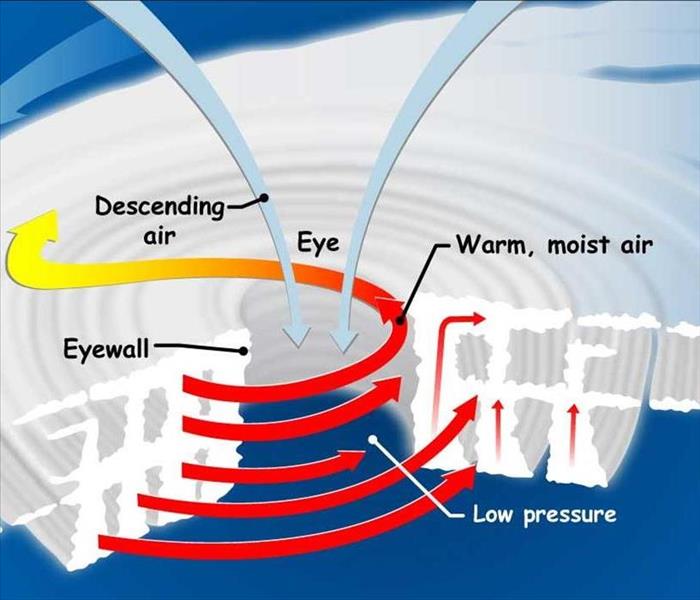Birth of a Hurricane
9/7/2018 (Permalink)
Given the right conditions, a small storm can quickly grow into a hurricane. All it takes is water above 79°F, The meeting of a low and high-pressure system, and no land to impede the process.
The Majority of Hurricanes begin as small thunderstorms near the west coast of Africa. As they continue to move westward into the Atlantic, warm moisture is picked up and fuels the growing storm. Over time, the small thunderstorms will merge together to become one large mass.
Earths rotation causes these growing storms to rotate counterclockwise, known as The Coriolis Effect. To get this spin the storm will also need to have a high-pressure system on top and a low-pressure system on the bottom. This is similar to how a tornado forms.
Both Tornadoes and Hurricanes share many similar traits such as an eye and an eyewall. The eye, the center of the storm, is typically clear of any rain or clouds. This is because it is the strongest point where the high pressure and low-pressure systems move between one another. The cool air is warmed by the sun, rises, cools in the high atmosphere, falls, and the cycle starts over once again. Structurally speaking, a Tornado is a compact mini-Hurricane.
Once the Hurricane makes landfall, it unleashes all the energy it had been storing from the open ocean. Without its fuel source, it will continue to weaken back into a small cluster of thunderstorms and eventually dissipate altogether.
To learn more about how hurricanes form you can click this link.





 24/7 Emergency Service
24/7 Emergency Service
